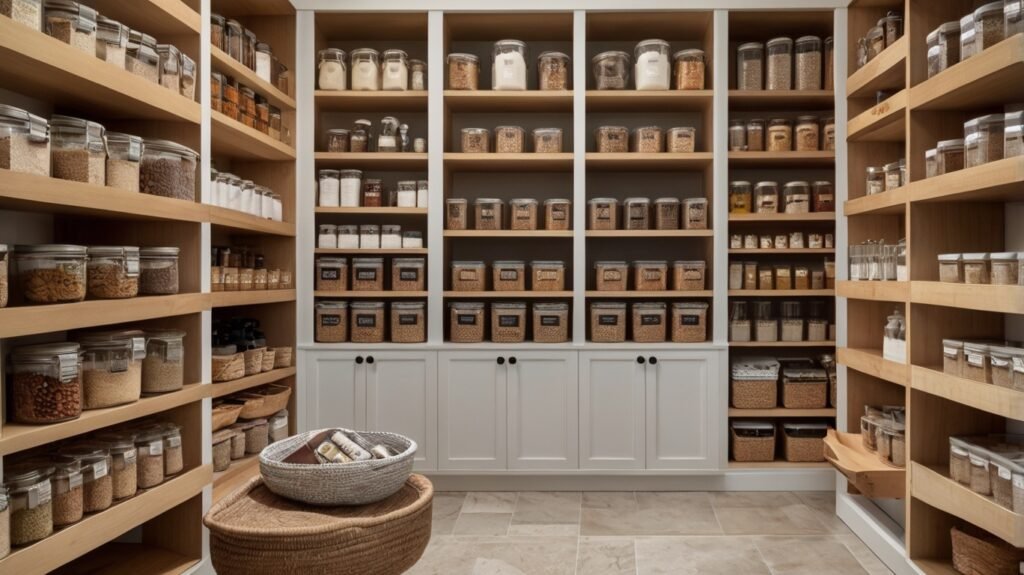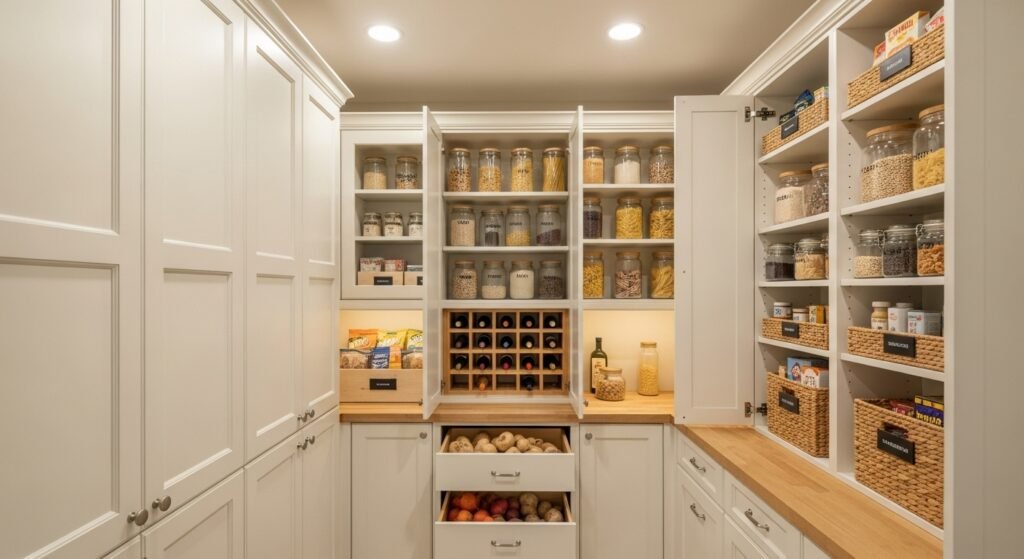The Complete Guide to Designing and Organizing a Pantry
Introduction
- The importance of an organized pantry in the home.
- Overview of the article: benefits of a well-organized pantry, design tips, storage solutions, and maintenance strategies.
Understanding Pantries
- Definition: What a pantry is and its purpose in the home.
- Types of Pantries:
- Walk-in pantry
- Cabinet pantry
- Closet pantry
- Pantry shelves
- Benefits:
- Efficient storage for food and kitchen supplies.
- Reduces clutter in the kitchen.
- Improves meal planning and preparation.
- Common Features:
- Shelving, drawers, pull-out bins, and hooks.
- Lighting and accessibility features for ease of use.
Designing a Pantry
- Space Considerations:
- Measuring the available space and choosing the right type of pantry.
- Utilizing corners and underutilized spaces for shelves.
- Layout Options:
- Straight-line, U-shaped, or L-shaped pantry designs.
- Zones for different categories (dry goods, spices, canned goods, snacks).
- Storage Solutions:
- Adjustable shelves for flexibility in organizing different-sized items.
- Pull-out drawers, bins, and lazy Susans for easy access.
- Wire racks, baskets, and dividers for organizing cans, boxes, and jars.
- Accessibility:
- Installing pull-down shelves or slide-out pantry drawers for hard-to-reach items.
- Designing the pantry for both adults and children for ease of use.
Organizing Your Pantry
- Sorting and Decluttering:
- Emptying the pantry and assessing the contents.
- Discarding expired items and those no longer needed.
- Organizing items into categories for easy access.
- Storage Baskets and Bins:
- Using clear, labeled bins for snacks, dry goods, and baking supplies.
- Choosing the right size and type of containers for optimal storage.
- Labeling:
- Labeling shelves, bins, and containers for easy identification.
- Using chalkboard labels or sticky labels that can be repositioned.
- Keeping it Organized:
- Regularly rotating stock to use older items first.
- Implementing a system for restocking supplies.
- Avoiding overstocking to prevent clutter and waste.
Maintaining a Pantry
- Routine Cleaning:
- Periodically removing all items to clean shelves and containers.
- Wiping down shelves and organizing tools.
- Regular Decluttering:
- Reassessing pantry contents to remove expired items and items not used regularly.
- Stock Management:
- Keeping track of pantry inventory to prevent over-purchasing.
- Setting up a system for restocking frequently used items.
- Avoiding Pantry Buildup:
- Staying on top of new purchases to maintain an organized space.
- Implementing a system for dealing with bulk purchases.
Creative Ideas for Pantries
- Open Shelving:
- Using open shelves for displaying decorative containers and jars.
- Incorporating open shelving in modern kitchen designs for easy access to items.
- Glass Jars:
- Storing dry goods in clear glass jars for visual appeal and easy visibility.
- Using decorative labels for an aesthetically pleasing look.
- Customized Storage Solutions:
- Tailoring the pantry to specific needs, such as adding a wine rack or spice drawer.
- Integrating a pull-out trash can or recycling bin into the pantry design.
- Incorporating Technology:
- Using apps to manage pantry inventory and keep track of expiration dates.
- Digital labels for automated tracking.
Conclusion
- The value of a well-designed and organized pantry in enhancing the functionality of the kitchen.
- Final tips for designing, organizing, and maintaining a pantry for optimal use.
- Encouragement to customize the pantry to individual needs and lifestyle.
Pantry Gallery






